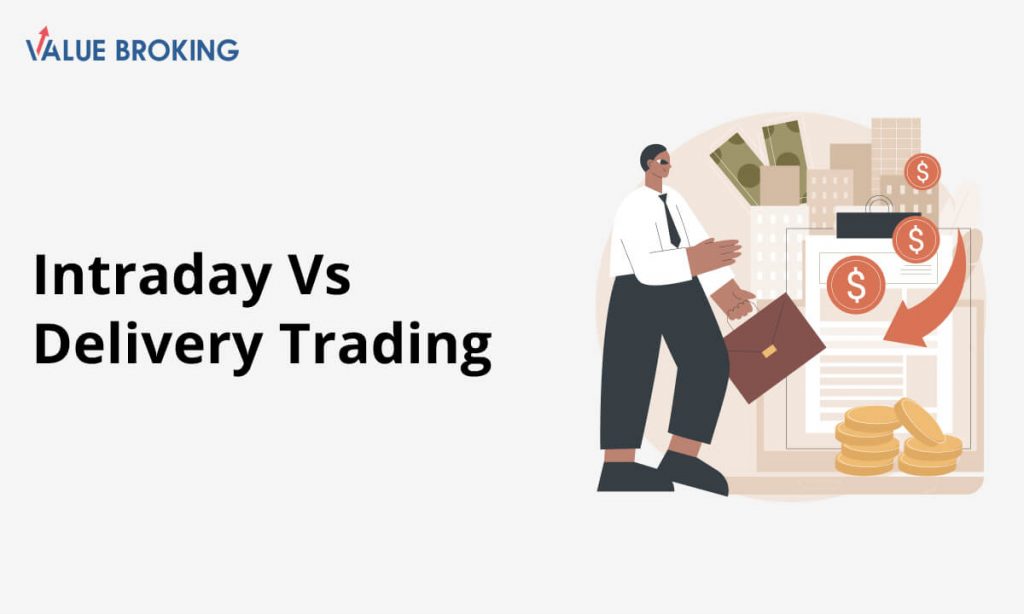Intraday Vs Delivery Trading

There are a plethora of trading options in the stock market. An individual needs to pick out those that match their needs and requirements. There are both long-term and short-term investment opportunities in the market, in which intraday trading is emerging in today’s time. You may be wondering now what is the difference between intraday and delivery trading?
This article will brief you about the difference between intraday & delivery trades. To understand intraday vs. delivery trades properly, let’s discuss Intraday trades and delivery trades individually.
Table of Contents
What are Intraday Trades
Intraday trading means buying and selling stocks within the same day before the market closes. Intraday trading is also known as day trading. It allows you to profit through price fluctuations. Although you can earn significant returns on your long-term investments, you can also make substantial returns on your short-term trades like intraday trades if you plan your intraday strategy well.
Advantages of Intraday Trading
- Require a little capital investment as a payment
- Leverage capital to profit maximumly.
- Elimination of overnight risks of the stocks
Disadvantages of Intraday Trading
- No long-term capital investments.
- Leverage can be risky.
- Constant attention is a must by the end of the day.
What are Delivery Trades?
In Delivery trades, an investor can’t buy and sell shares on the same day. You can hold your shares as long as you want. The duration will be more than one day, even more decades.
Advantages of Delivery Trading
- No time limitation for selling stocks
- Get easy bonus earnings such as Dividends, Bonus issues, Rights issues, etc.
- Receive higher returns through the company’s dividends and bonuses.
- No risk of short selling. Short selling means borrowing shares to sell and then purchasing them again before the trading day’s end.
Disadvantages of Delivery Trading
Trading will not occur if an investor fails to pay the transaction upfront’s entire amount. If you don’t have sufficient funds, you can lose a good opportunity.
The Importance of Margin Trading
- You can leverage positions in securities that don’t belong to the derivatives segment.
- Only SEBI-authorized brokers provide margin trade accounts.
- SEBI and respective stock exchanges predefined margin-traded Securities.
- It allows you to make positions against the margin as cash or collateral.
- You can carry forward the margin-created positions up to a maximum of N+T days, where N is the number of days while T is the trading days.
- Create an MTF account to avail of the margin trading facility.
- MTF boosts the rate of return on your investment.
- MTF boosts your purchasing power.
- SEBI and stock exchanges look after the margin trade facility.
Eligibility for Margin Trading
You will have to create an MTF account to avail of the margin trading facility. The margin differs from one broker to another. There is a need for a minimum amount when opening the MTF account. Make sure to have minimum balance throughout the time. If there is no minimum balance, then your trade will get squared-off. It is compulsory to square off the position at each trade session’s end.
Intraday vs. Delivery Trading: Conclusion
This article on the difference between intraday and delivery trading discussed two trading options: intraday trades and delivery trades. That you need to choose from as per your expectations and requirements. The objective of intraday trades is to make profits within the same day. In contrast, delivery trades allow you to hold stocks for more than a day. Thus, you need to open a demat account for delivery trades. Hope you found this article helpful in understanding the difference between intraday and delivery trading (intraday vs. delivery).